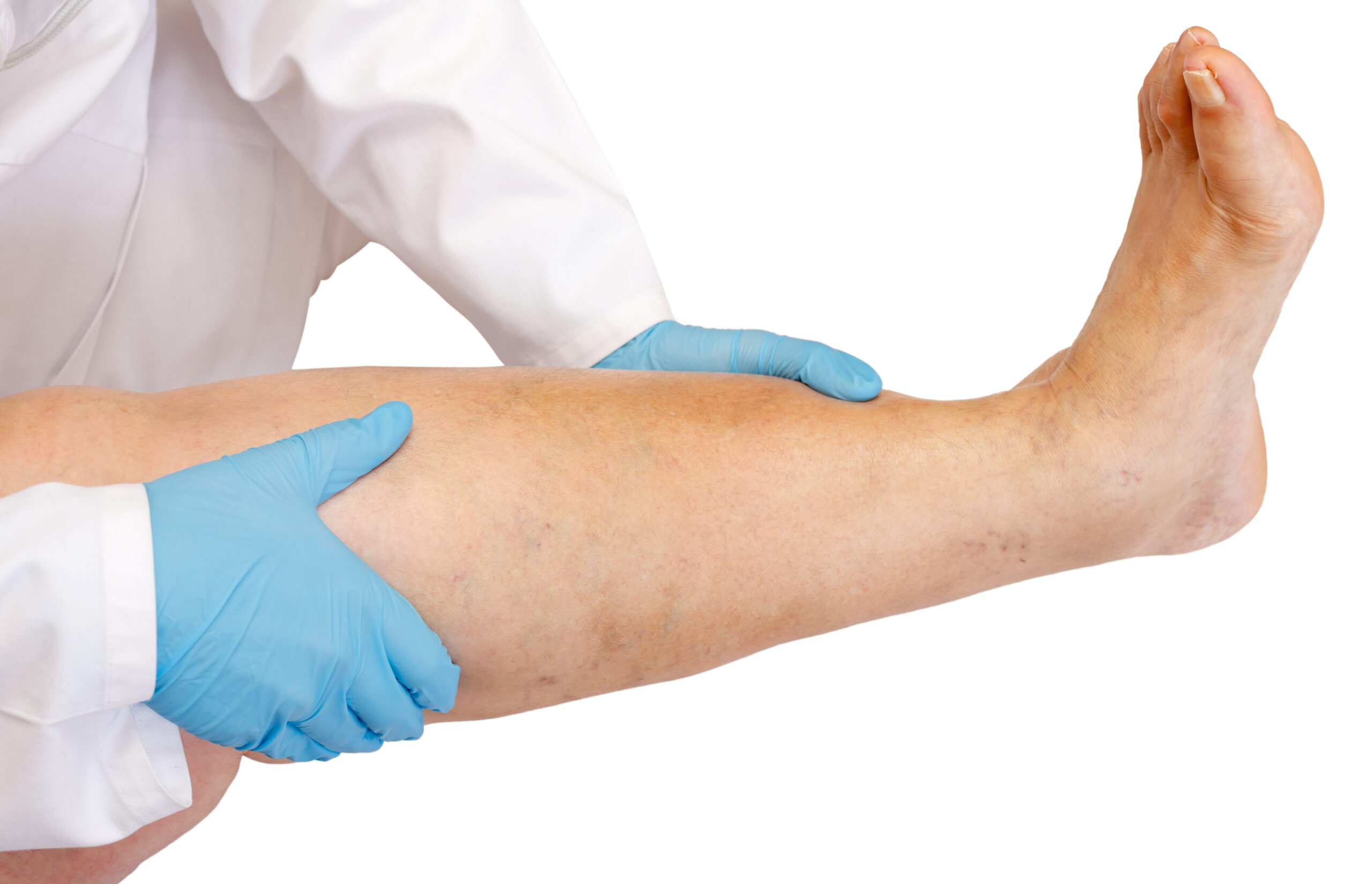Lower leg pain can strike any time during a morning jog, after standing all day, or even in the middle of the night. This discomfort affects millions of people.
It’s often your body’s way of signaling issues like muscle cramps, poor blood flow, or even stress-related injuries.
Wondering why this happens? More importantly, how do you fix it? Keep reading to discover practical solutions and expert advice for managing lower leg pain.
Understanding Lower Leg Pain
Lower leg pain has many causes and can be classified as acute or chronic. Acute pain comes on suddenly, often from muscle strains or nocturnal leg cramps.
Chronic pain develops gradually, often starting as mild pain. Over time, it worsens, progressing into sharp, persistent pain, even after treatment.
The lower leg contains several muscles and structures that are prone to injury. The calf muscles, including the gastrocnemius and soleus, handle movements like walking and standing on your toes.
These muscles are especially vulnerable to cramps and strains.
Why Is Lower Leg Pain So Common?
Lower leg pain is common because we rely on these muscles and structures for almost all daily activities. Repetitive movements, like running or jumping in sports, can easily lead to overuse and injuries.
As we age, factors like diabetes and other health conditions can reduce blood circulation, making persistent pain more frequent.
Common Causes of Lower Leg Pain
Lower leg pain can stem from several underlying issues, each involving distinct systems within the body. Understanding these causes provides a clearer path toward diagnosis and treatment.
Muscle-Related Issues
Muscle-related issues are a leading cause of lower leg pain. The most common is cramping, or charley horses, caused by sudden and involuntary muscle spasms in the legs.
These cramps often affect the calves and result from dehydration, electrolyte imbalance, and fatigue, leading to sharp calf pain and stiffness. They also tend to happen at night.
A study of British Olympic track and field athletes over three seasons revealed soleus strains were the third most common injury-causing time loss.
On average, the athletes lost 25.1 days per soleus injury compared to 18.8 days for hamstring injuries.
Tendinitis, such as Achilles tendinitis, inflames the tendons, with symptoms like pain and stiffness worsening during activity.
Medial tibial stress syndrome, also known as shin splints, results from repetitive stress on the muscles and soft tissues surrounding the shin bone, commonly affecting runners and dancers.
Vascular Diseases
Deep vein thrombosis happens when blood clots form in one or more veins, usually in the calf or thigh areas of the leg. If left untreated, it develops into post-thrombotic syndrome.
These occur in up to 50% of patients within 2 years of DVT and have several symptoms, including leg pain, swelling, and in severe cases, venous ulcers.
Peripheral Artery Disease often starts with intermittent claudication, causing leg pain or cramping during activities like walking that ease with rest.
If untreated, it can progress to chronic limb-threatening ischemia (CLTI), which may result in amputation. This condition affects over 10% of people aged 65 and older.
Neurological Disorders
A study among 5,122 individuals with cerebral palsy found that 21% reported lower leg pain. The prevalence was higher in adults (27%) compared to children (19%) and increased with age, affecting 76% of those over 50.
Lower leg pain and sciatic nerve pain are often co-related. It is often caused by nerve compression from herniated discs or spinal stenosis, with common symptoms like sharp pain below the knee and muscle weakness.
The lifetime incidence of sciatica is reported to be between 10% to 40%, meaning many people will experience it at some point in their lives.
Diagnosing Lower Leg Pain
Healthcare providers may diagnose shin splints and other diseases that cause lower leg pain by reviewing your history and conducting examinations.
The physical exam focuses on swelling, tenderness, skin changes, and restricted movement. Joint stability and nerve function are also evaluated during the examination.
Imaging tests like X-rays can reveal fractures or bone deformities. MRIs and CT scans offer detailed views of muscles, tendons, and ligaments, helpful for diagnosing conditions like stress fractures or nerve compression.
Blood tests may uncover infections, autoimmune diseases, or diabetes as underlying causes.
Self-Care and Prevention Strategies
Taking proactive care of your lower legs can help alleviate pain and prevent future issues. Here are a few tips on how to do them.
Preventing Lower Leg Pain
Simple, consistent habits can help prevent lower leg pain. Regular stretching and strengthening exercises improve flexibility and blood flow, reducing cramps and muscle fatigue.
Calf stretches, ankle rolls, and resistance band exercises work particularly well. Wearing proper footwear with arch support and cushioning absorbs impact and reduces strain.
Gradually increasing activity levels during running or hiking helps muscles adapt and prevents injuries like shin splints.
Eating foods rich in potassium, magnesium, and calcium, like bananas, leafy greens, and dairy, helps prevent nutrient deficiencies.
Managing Muscle Cramp
When muscle cramps happen, simple remedies can bring relief. Stretching the affected muscle, like flexing your foot upward, helps ease the cramp and reduce discomfort.
Gentle massage can also relax the muscles and improve blood flow to the area. Heat packs are great for relaxing tight muscles, while cold packs reduce inflammation and numb pain.
Staying hydrated and replenishing electrolytes like potassium and magnesium is essential to preventing future cramps.
Effective Solutions for Lower Leg Muscle Pain
Many treatment options are available, and some may work better for your lower leg pain than others. Here are a few worth considering.
Physical Therapy
Specialists will design personalized exercise regimens that target specific muscle groups, such as the calf muscle, to improve flexibility and reduce pain.
Techniques like gait training and balance exercises can help prevent future injuries. These are useful during a recovery period from injuries.
Medications
Medications are often used to manage symptoms and reduce inflammation. Nonsteroidal anti-inflammatory drugs (NSAIDs) like ibuprofen are commonly prescribed.
Pain relievers may also ease discomfort, while anticoagulants (blood thinners) are crucial for treating vascular issues like deep vein thrombosis (DVT).
Surgical Intervention
In severe cases, surgery may be necessary to address the root cause of the condition itself. For example, vascular procedures may be required to remove blood clots in cases of advanced DVT.
Fractures might also require surgical repair. Surgery is typically considered when other treatments fail to provide relief or when the condition poses a serious health risk.
Alternative Therapies
A study of 640 patients with restless leg syndrome highlighted acupuncture as a promising alternative treatment.
The total effective rate was 91.6% for acupuncture, compared to patients treated with non-acupuncture therapies, who had a much lower effective rate of 65.8%.
Medical massage therapies, on the other hand, help release muscle tension and promote relaxation, making it a popular choice for conditions like sciatica and leg muscle cramps.
When to Seek Medical Attention
Lower leg pain is not often manageable, and some symptoms need urgent medical attention. Sudden or severe pain with swelling, redness, or warmth could signal deep vein thrombosis (DVT) or an infection.
These conditions can lead to serious complications, like a pulmonary embolism, if untreated. Numbness, tingling, or weakness in the leg might indicate nerve issues like sciatica or peripheral neuropathy.
Coldness or paleness in the leg could point to poor blood flow from conditions like PAD or arterial blockages, requiring immediate care.
Let Us Help You Relieve Pain in Your Leg Muscles
At Wellness and Pain, we’re here to help you find relief from lower leg pain, whether it’s caused by muscle strain, nerve issues, or more severe health conditions.
Our team of world-class specialists takes a personalized approach, focusing on the root cause of your pain to help you move comfortably and get back to doing what you love.
Give us a call at (844)-588-3732 or fill out our contact form to schedule an appointment. Let’s work together to help you feel your best again.
FAQs About Lower Leg Pain
What is the cause of lower leg pain?
Lower leg pain can be caused by muscle-related issues like cramps or strains, vascular conditions such as deep vein thrombosis (DVT) or poor circulation, nerve problems like sciatica or neuropathy, and overuse injuries like shin splints.
What diseases start with leg pain?
Diseases that often begin with leg pain include peripheral artery disease (PAD), deep vein thrombosis (DVT), and peripheral neuropathy. Conditions like arthritis, varicose veins, and certain infections can also present with leg pain as an early symptom.
How do I know if my leg pain is vascular or muscular?
Vascular pain often involves symptoms like swelling, redness, coldness, or a lack of pulse in the affected area, whereas muscular pain is typically linked to cramping, stiffness, or soreness after activity.
When should I be concerned about leg pain?
Seek medical attention if your leg pain is sudden, severe, or accompanied by symptoms like swelling, redness, numbness, coldness, or inability to bear weight. These could indicate serious conditions like DVT, nerve damage, or arterial blockages.











